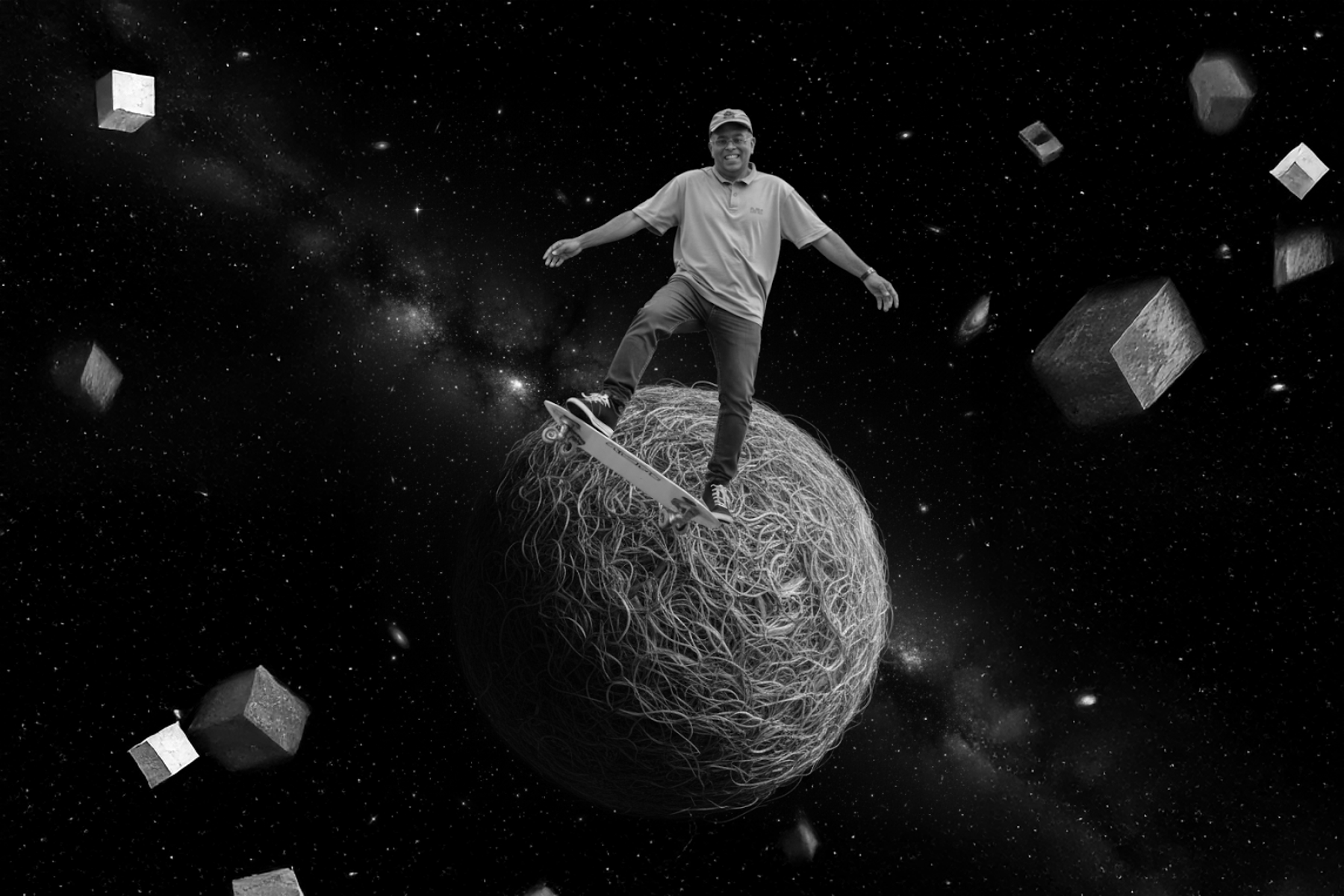The Square We Stand In
What a short film and a book taught me about creative freedom

There's something haunting about watching a young skateboarder trade his freedom for a square on the ground.
Think outside the box
In the short film "Full Time," Michael Tucker accepts $50 to stand in a designated area all day. What starts as easy money becomes a life sentence. Years pass. The square gets bigger, the pay increases, but Michael's spirit withers. By the end, he's asking permission to retire from a job that never really existed.
Sound familiar? square³
The Ultimate Square
Last week, America's most powerful tech CEOs sat around Trump's dinner table, each taking turns to announce their billions in US investments. Zuckerberg, Gates, Cook—one by one pledging fealty like courtiers before a king. Were they orbiting the hairball or standing in the ultimate square? When you're worth hundreds of billions but still need to perform for political power, maybe the square just got bigger.
The Corporate Hairball
I recently finished reading "Orbiting the Giant Hairball" by Gordon MacKenzie, and it struck me how it complements this film's message. MacKenzie spent 30 years at Hallmark Cards and discovered something crucial: corporations aren't inherently evil, but they can trap your creativity if you let them.
His solution? Orbit the hairball instead of getting tangled in it.
The hairball is all the bureaucracy, politics, and meaningless procedures that accumulate in large organizations. Most people either fight it directly (and get crushed) or surrender completely (and lose their souls). But MacKenzie found a third way: stay close enough to benefit from the corporation's resources while maintaining enough distance to preserve your creative edge.
The Real Prison
Michael's square isn't really about corporate jobs. It's about any situation where we trade our agency for the illusion of security. The tragic part isn't that he took the job—it's that he stopped questioning why he was there.
Creative people face this choice constantly. Do you take the stable design job that pays well but kills your experimental work? Do you join the startup that promises equity but demands 80-hour weeks? Do you freelance and risk financial instability?
There's no perfect answer, but there's a better question: How do you maintain your creative core regardless of where you work?
Staying Human
MacKenzie's approach offers hope. You can work within systems without becoming the system. You can earn money without selling your soul. You can orbit the hairball—close enough to benefit, far enough to breathe.
The key is remembering that your creativity belongs to you, not your employer. Your best ideas don't live in the company's intellectual property—they live in your willingness to see the world differently.
Michael's mistake wasn't taking the job. It was forgetting he could leave the square anytime.
A Different Path
I've been sharing these kinds of reflections because many creative people feel trapped between starving artists and corporate drones. There's a middle path—one where you use systems instead of being used by them.
That's what this article explores: how to navigate the practical world without losing what makes you creative. I'd love to hear your thoughts if these ideas resonate with you. Reply or comment in the blog post and tell about your own experience with corporate squares or creative orbits.
Because the best conversations happen when we share our struggles and solutions honestly.
.

